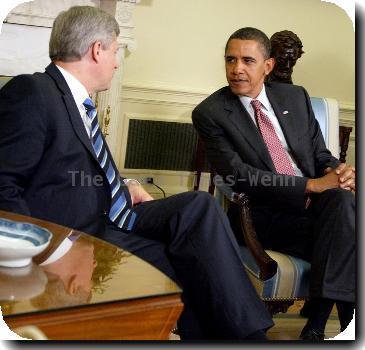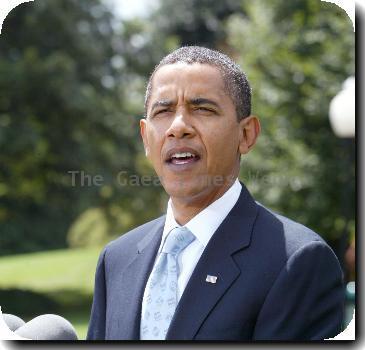The year on campus: lofty rhetoric and change from Washington, financial struggle at colleges
By Justin Pope, APThursday, December 24, 2009
The year on campus: change and hard times
For higher education, 2009 was a time of lofty goals and harsh realities, of major policy shifts in Washington and financial struggle on campuses nationwide.
In Washington, President Barack Obama called for the United States again to lead the world in college attainment by 2020. Congress poured billions of stimulus dollars into research and student financial aid and reshaped the federal student loan system. Veterans enjoyed vast new benefits and student borrowers with low incomes or public service jobs got new flexibility paying down their debts.
But the defining images of 2009 were thousands of miles away, in California: Students cramming into overcrowded classrooms, parents protesting tuition hikes, activists occupying buildings and breaking windows.
Their anger was focused on massive budget cuts that forced the state’s renowned public university system to turn away qualified students for the first time in memory.
“There’s transfer students who can’t transfer to the University of California because the classes they need to transfer don’t exist. Those departments don’t exist,” said Marika Iyer, a UC-Berkeley student who has been arrested twice in recent weeks at protests. “When the social contract gets broken, people get angry.”
California wasn’t the only state whose colleges felt the pinch of the Great Recession. But the cuts there were sharpest, and nowhere else were the national trends so vividly displayed: a diversifying population, surging demand for higher education and a system that booms in good times but always seems short of money when it’s needed most.
Molly Broad, president of the American Council on Education, said she could not recall another time “when some of the great public universities were cut so dramatically they felt they had no choice but to limit admissions.”
Money wasn’t the only higher education story in 2009; swine flu hit college campuses especially hard. The American College Health Association reported 87,000 cases, 165 hospitalizations and three deaths.
But hot topics from past years all took a back seat to the economy.
Public colleges laid off thousands of staff and passed on much of their state budget shortfall to students through higher tuition. Private colleges’ endowments decreased by 25 percent or more. The richest colleges most noticed the pinch, because they rely the most on their endowments.
Community colleges basked in unprecedented attention from philanthropy, government and the press as millions sought job retraining, and Obama laid out his 2020 targets. But they struggled to accommodate the flood of demand; one Boston community college even ran classes after midnight.
For-profit colleges may have fared best, tapping demand for job retraining and expanded federal aid for low-income students. But they also faced scrutiny over their enrollment practices and the prospect of tighter regulation.
It seemed better to be in college in 2009 than to have recently graduated. The job market was the worst in recent memory, with nearly 11 percent of recent college graduates unemployed, notes Rich Williams, higher education associate of the advocacy group US PIRG.
On the other hand, new income-based repayment options kicked in for student loan borrowers with low salaries or public interest jobs. And the economic stimulus package helped low-income students with tax benefits, plus an extra $17.1 billion over two years to boost the maximum Pell Grant by about $600 to $5,350.
A new GI Bill took effect, substantially increasing benefits for veterans — though the Veterans Affairs Administration was still struggling to process several thousand claims at year’s end.
“In large part, 2009 was a turning point for federal priorities, making massive investments into financial aid programs that had been stagnant for years,” Williams said.
The price: The Pell program is now expected to cost $18 billion more than anticipated over the next three years, helping fuel criticism of out-of-control spending by Obama and the Democrat-controlled Congress.
Private nonprofit colleges, which educate about 5 million students and typically charge more than public colleges, started the year deeply worried that applications would plummet. But many managed to increase financial aid even as they cut spending elsewhere and demand generally held up.
“The notion that we would have this ‘Apocalypse Now’ in back-to-school 2009 simply didn’t occur,” said David Warren, president of the National Association of Independent Colleges and Universities.
Some experts believe the recession-driven belt-tightening will prove valuable to American colleges. For years, they’ve postponed tough choices.
But the nationwide campus construction boom of recent years came to a halt, as did faculty hiring. Numerous college dining halls went “trayless” to cut back on food waste. Two prominent universities, Northeastern and Hofstra, cut their football teams.
The media delighted in stories portraying a suddenly frugal Harvard cutting back on hot breakfasts for students and cookies at faculty meetings.
Colleges seemed to encourage such stories because they supported the argument it was possible to cut fat while protecting financial aid and the core student experience. But the scope of many cuts called that into question. Harvard’s endowment, which kicks in one-third of the university’s budget, lost around $10 billion last year, or close to 30 percent of its peak value. The university is now trimming hundreds of millions from its budget — cuts that include spending on labs and faculty.
Iyer, a second-year student from Champaign, Ill., said the signs are unmistakable on Berkeley’s campus: giant classes with few or no teaching assistants, and maintenance requests piling up. Recently, she says, a broken chalkboard fell and injured a lecturer.
“I think that’s why so many people are involved (in protests),” Iyer said. “It’s not some abstract bourgeois fight, the stereotypical student movement. This is something that clearly applies to everybody.”
Tags: Barack Obama, Berkeley, California, Education Costs, Endowments, Labor Economy, Military Affairs, North America, Philanthropy, Recessions And Depressions, United States

